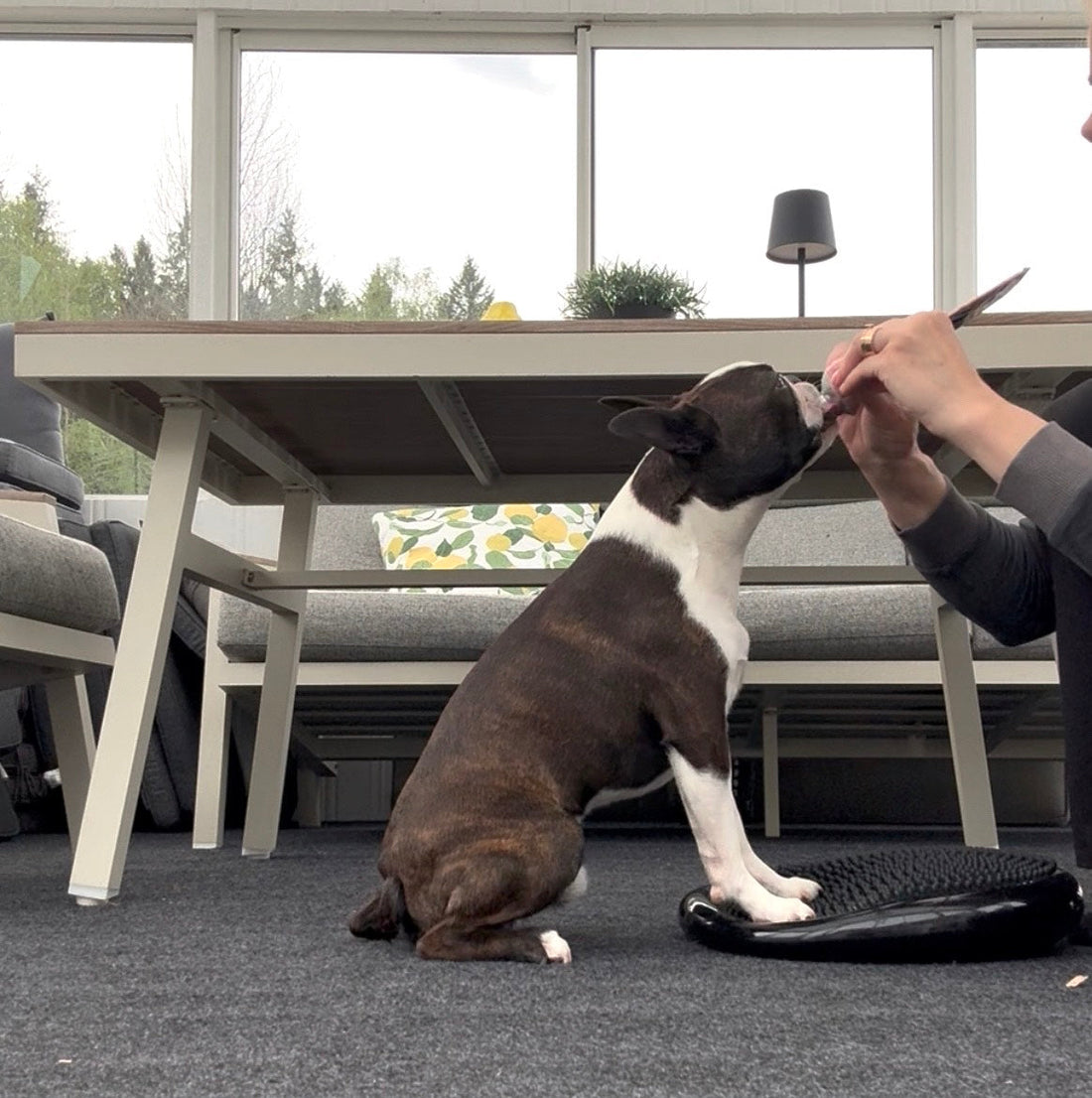
Balance and Strength for Show Dogs
Share
Have you received feedback from a show judge that your dog needs more muscle, a stronger back, or better stability in the front and elbows? You’re not alone – and the good news is that there’s actually a lot you can do at home and in water to strengthen your dog’s body.
Building muscle mass in dogs is not just about achieving a more beautiful silhouette in the show ring – it’s equally important for creating a strong and durable body that can handle the demands of everyday life. A well-muscled dog moves more steadily, has greater endurance, and is less prone to injuries. But how do you train effectively without putting strain on joints and tendons?
Luckily, there are many simple and gentle ways to activate your dog’s muscles. By combining exercises for strength, balance, coordination, and endurance, you can help your dog develop a powerful, supple, and well-balanced body.
The Best Exercises for Building Muscle Mass
Here are the top exercises that most effectively build muscle mass in dogs, without putting strain on the joints:
Hill training – natural strength training for hind legs, thighs, and glutes.
Cavaletti – strengthens the back, core, and fine motor control in movement.
Sit-to-stand & step-ups – builds both front and hind limb muscles.
Pulling exercises (play or light pulling in harness) – strengthens the back, neck, and entire hindquarters.
Balance exercises (balance cushion, pad, uneven ground) – develops the small stabilizing muscles.
Water treadmill – controlled, even muscle training with resistance but no impact; also excellent for improving smooth movement.
Swimming – full-body workout for both strength and conditioning.
Gallop intervals – develops explosive muscle power in the back and hindquarters.
Balance and Stability Exercises for Dogs
A dog with good balance and stability moves more harmoniously, is less prone to injury, and shows a stronger presence in the show ring. Balance is trained by engaging the small stabilizing muscles around joints and the spine, which are often overlooked in daily walks. Here are a few practical exercises you can start with today:
Standing on a balance ball or cushion
- Use a soft balance ball, a long cushion, or a folded blanket.
- Let the dog stand with all four paws on the surface for 10–30 seconds. Increase the time gradually.
- Once the dog is steady, try lifting one paw at a time. You can also train sit-to-stand or lie-to-stand transitions on the ball.
Effect: Strengthens the core, shoulders, and hind leg muscles while improving body awareness and stability in the front and around joints.
Cavaletti training
- Place 4–6 poles on the ground, spaced 50–80 cm apart (adjust for your dog’s size).
- Have the dog walk slowly over the poles.
- Start with 2–3 repetitions and gradually increase.
Effect: Improves stride length, coordination, back strength, and core stability.
Please note: The following training setup is only a suggestion and should always be adjusted to your dog’s age, condition, and daily form. Be attentive to your dog’s signals and stop if you see signs of discomfort or pain. If your dog has specific needs or challenges, we recommend consulting a certified canine physiotherapist (canineopath) for individual guidance.
Suggested Training Sessions
Session 1 – Trot & Balance
- 20–30 min walk/trot on varied terrain (gravel, forest path, soft ground).
- 2–3 sets of cavaletti (5–8 poles).
- Finish with 3 × 30 sec standing on balance pad/cushion.
Purpose: Stability, coordination, and core strength.
Session 2 – Hills & Strength
- 6–8 hill repeats in trot (short but steep hill).
At-home exercises:
- Sit-to-stand × 10–12
- Step-ups on a box × 8
Purpose: Build hind leg, thigh, and glute muscles.
Session 3 – Water Training (note: consult a professional regarding water level and intervals for your dog – this is a general suggestion)
- Water treadmill: 15–20 min with water level adjusted for your dog.
- Or swimming: 3–4 × 2 minutes with breaks in between.
Purpose: Muscle training without joint strain, even strength building across the body.
Session 4 – Gallop & Explosiveness
-S hort interval training on soft ground (field, gravel, forest path).
- 6–8 short sprints (50–100 m) in gallop, with rest between.
- Light pulling play afterward (2–3 min).
Purpose: Explosive power, back and shoulder muscles.
General Guidelines
- Train calmly and in control – quality over quantity.
- Finish each session with a short walk or stretch for recovery.
- Reward often – training should be fun!
- Always adapt the difficulty to your dog’s size, age, and experience.
Building muscle and stability in your dog doesn’t have to be difficult or time-consuming – it’s about finding a routine and exercises that fit into everyday life. By varying training with hills, balance work, water sessions, and play, you’ll not only achieve a stronger dog, but also a happier and more harmonious companion.
Remember to start gently, adapt exercises to your dog’s age and abilities, and focus on short, consistent sessions rather than overloading. After just a few weeks of dedicated training, you’ll notice improvements in muscle mass, endurance, and movement quality.
So take advantage of the off-season with fewer shows – start building a stronger, more stable, and well-trained dog. Your dog will thank you, both in the show ring and in daily life!

